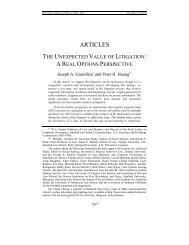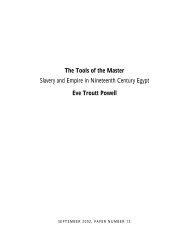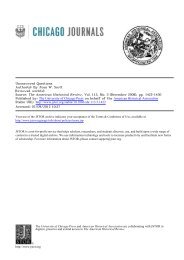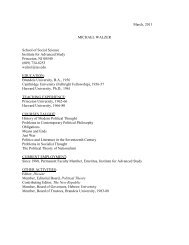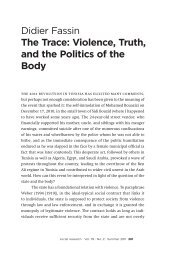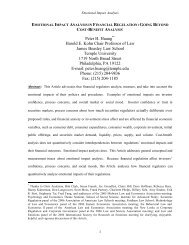Secure Implementation Experiments: Do Strategy-proof Mechanisms ...
Secure Implementation Experiments: Do Strategy-proof Mechanisms ...
Secure Implementation Experiments: Do Strategy-proof Mechanisms ...
Create successful ePaper yourself
Turn your PDF publications into a flip-book with our unique Google optimized e-Paper software.
(d) The frequency of bad outcomes that did not recommend funding of the public good was 17% across all<br />
periods in Treatment P. Almost all (98%) of the observed Nash equilibria that involved dominated<br />
strategies were good Nash equilibria that recommended funding of the public good.<br />
6.2 Treatment S<br />
Figure 5 shows the frequency distribution of all data in Treatment S. The maximum<br />
frequency pair was the dominant strategy equilibrium (13, 18) with 146 of the 180 outcomes.<br />
Pairs played no other single outcome more than 4 times.<br />
--------------------------------<br />
Link to Figure 5<br />
--------------------------------<br />
We conducted period by period tests of the hypothesis that the median choice equals the<br />
dominant strategy (13 for type 1 and 18 for type 2). A Wilcoxon signed rank test never rejects<br />
the dominant strategy equilibrium hypothesis for any type in any period.<br />
Summarizing the above results, we have the following:<br />
Observation 2:<br />
(a) The frequency of dominant strategy equilibrium was 81% across all periods in Treatment S.<br />
(b) The data do not reject the hypothesis that subjects' median choice equals the dominant strategy for<br />
either type in any period in Treatment S.<br />
6.3 Comparing the Two <strong>Mechanisms</strong><br />
Here we compare the frequency that subjects play dominant strategies and that pairs<br />
implement dominant strategy equilibria in the two mechanisms. Recall that an advantage of our<br />
experimental design is that we can compare these two mechanisms while holding constant their<br />
complexity. We did not present to subjects any explanation on the rules of a mechanism, and<br />
instead we simply used payoff tables to explain the relationship between choices and outcomes.<br />
26




